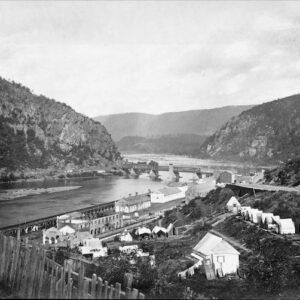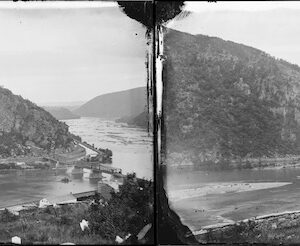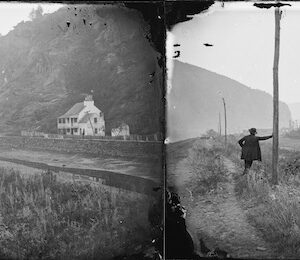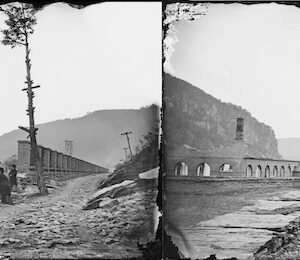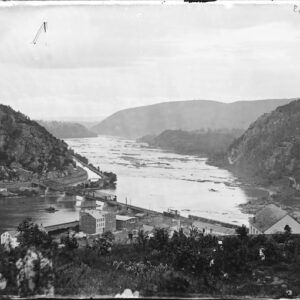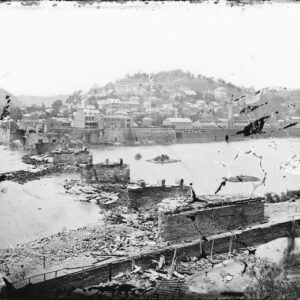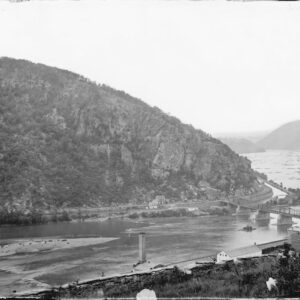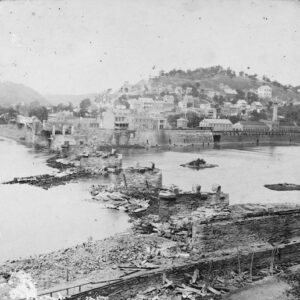Tag: US Armory and Arsenal (Harpers Ferry WV)
Wikipedia says: The Harpers Ferry Armory, more formally known as the United States Armory and Arsenal at Harpers Ferry, was the second federal armory created by the United States government. (The first was the Springfield Armory.) It was located in Harpers Ferry, Virginia (since 1863, West Virginia). It was both an arsenal, manufacturing firearms, and an armory, a storehouse for firearms. Along with the Springfield Armory, it was instrumental in the development of machining techniques to make interchangeable parts of precisely the same dimensions.
The Armory was a long, narrow complex of buildings, located alongside the Baltimore & Ohio Railroad line on a strip of land alongside the Potomac River. The entrance was close to the center of town, with its train station and hotels, and the bridge, the B & O Railroad Potomac River Crossing. At its peak, just before the Civil War, the Armory had 400 employees.
During the Civil War
While Virginia was still in the Union, the armory regularly shipped manufactured weapons and material throughout the United States. However, once the Civil War began, the national armory became a vital control point for both the Confederates and the Union.
Close to the beginning of the war on April 18, 1861, just a day after Virginia’s conventional ratification of secession, Union soldiers, outnumbered and deprived of reinforcements, set fire to their own armory in an attempt to thwart the usage of it by an advancing Virginian Confederate militia numbering 360 men in all. Harpers Ferry residents (many of whom made their living off the armory) were able to put out the fires swiftly enough to save most of the armory’s weapon-making machinery. After rescuing the equipment, the Confederates shipped it south by rail to Winchester, Virginia, and from there to Richmond, as Virginia had decided to reopen the Richmond Armory. The South had virtually no small-arms production and an inadequate supply of raw materials. The machinery taken from Harpers Ferry became the foundation of the Confederate arms manufacturing. Two weeks later, the Confederates abandoned Harpers Ferry, while also confiscating what was left in the Armory and burning the rest of the remaining buildings. They also blew up the railroad bridge of the Baltimore and Ohio Railroad, but returned in two weeks to destroy the Rifle Works and a bridge that crossed the Shenandoah river.
The armory’s strategic location
During the Civil War, the armory became a site of great strategic importance because it was located very close to the Mason-Dixon line, or the border between the free and the slave-holding states. Consequently, the Union used it as an effective means to supply troops with weapons quickly as they marched into battle. The downside to being on the border was that the armory could easily change hands and fall into Confederate control–the town of Harpers Ferry changed hands at least eleven times during the Civil War.
Aftermath of the Civil War
Due to the degree of damage to the armory during the Civil War, the U.S. government decided not to re-establish the armory at Harpers Ferry, instead focusing the quickly developing areas west of the Mississippi River.
